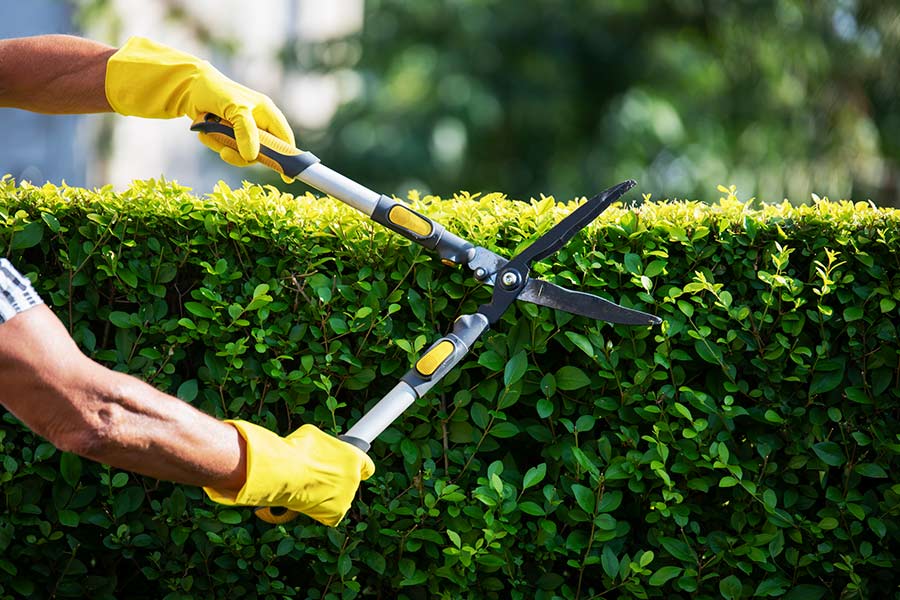Auckland, with its lush landscapes and temperate climate, is an ideal location for cultivating beautiful gardens and well-maintained hedges. Hedges serve various purposes, from providing privacy and acting as windbreaks to adding aesthetic value to properties. However, to keep them healthy and visually appealing, regular hedge trimming is essential. This comprehensive guide will explore the importance of hedge trimming auckland, techniques, tools, seasonal considerations, and tips for finding professional hedge trimming services in Auckland.
Why Hedge Trimming is Important
- Aesthetic Appeal: Well-trimmed hedges contribute significantly to the overall beauty of a garden or landscape. They provide a neat, structured look that enhances the property’s curb appeal.
- Health of the Hedge: Regular trimming helps maintain the health of the hedge by promoting new growth and preventing diseases and pest infestations. It also ensures that the hedge does not become too dense, allowing light and air to penetrate through.
- Growth Control: Trimming helps control the size and shape of the hedge, ensuring it does not grow beyond its intended boundaries. This is particularly important for hedges used as barriers or dividers.
- Safety and Accessibility: Overgrown hedges can obstruct pathways, driveways, and roads, posing safety hazards. Regular trimming keeps these areas clear and accessible.
- Property Value: A well-maintained garden, including neatly trimmed hedges, can increase the value of a property by enhancing its visual appeal and functional aspects.
Hedge Trimming Techniques
- Formative Pruning: This involves trimming young plants to establish a strong structure and desired shape. It is usually done in the first couple of years after planting.
- Maintenance Trimming: Once the hedge is established, regular maintenance trimming is required to keep its shape and size. This is usually done once or twice a year, depending on the type of hedge.
- Topiary: This is the art of trimming hedges into decorative shapes. It requires skill and precision and is often used to create visually striking garden features.
- Renovation Pruning: For neglected or overgrown hedges, renovation pruning can rejuvenate them. This involves cutting back the hedge more severely to encourage new growth.
Essential Tools for Hedge Trimming
- Hedge Trimmers: Available in manual, electric, and petrol-powered models, hedge trimmers are essential for efficient trimming. Electric and petrol trimmers are best for larger hedges, while manual trimmers are suitable for smaller, intricate work.
- Pruning Shears: Handheld pruning shears are useful for detailed trimming and cutting thicker branches that hedge trimmers cannot handle.
- Loppers: Loppers are used for cutting thicker branches and are particularly useful during renovation pruning.
- Ladders: For taller hedges, a sturdy ladder is necessary to reach the top safely.
- Protective Gear: Safety glasses, gloves, and ear protection are essential when using powered tools to prevent injuries.
Seasonal Considerations for Hedge Trimming in Auckland
Auckland’s climate influences the timing and frequency of hedge trimming. Here are some seasonal considerations:
Spring (September to November):
- Formative Pruning: Spring is an ideal time for formative pruning of young hedges as it encourages vigorous growth.
- Light Trimming: Perform light trimming to shape the hedge and promote new growth.
Summer (December to February):
- Maintenance Trimming: Trim hedges to maintain shape and control growth. Avoid heavy pruning during extreme heat to prevent stress on the plants.
Autumn (March to May):
- Major Trimming: This is a good time for more significant pruning before winter sets in. Trim hedges to prepare them for the dormant season.
Winter (June to August):
- Renovation Pruning: For overgrown or neglected hedges, winter is the best time for severe pruning. The plants are dormant, and this reduces the risk of shock.
Finding Professional Hedge Trimming Services in Auckland
For those who lack the time, tools, or expertise, hiring professional hedge trimming services is a great option. Here are some tips for finding reliable professionals in Auckland:
- Research and Reviews: Look for local hedge trimming services online and read customer reviews. Websites like Google, Yelp, and local business directories provide insights into the quality of service.
- Experience and Expertise: Choose a company with experienced professionals who have a good understanding of different hedge types and trimming techniques.
- Certifications and Insurance: Ensure the company is certified and has insurance coverage. This protects you from liability in case of accidents or damage during the trimming process.
- Quotes and Pricing: Request quotes from multiple companies to compare prices. Be wary of extremely low prices, as they may indicate subpar service.
- References: Ask for references from previous clients. Speaking to past customers can give you an idea of the company’s reliability and quality of work.
- Range of Services: Some companies offer additional services such as garden maintenance, tree pruning, and lawn care. Choosing a company that provides a comprehensive range of services can be beneficial.
Tips for Successful Hedge Trimming
- Regular Trimming: Regular trimming prevents the hedge from becoming overgrown and unmanageable. Aim to trim at least twice a year for most hedge types.
- Sharp Tools: Ensure your trimming tools are sharp and in good condition. Dull tools can damage plants and make trimming more difficult.
- Correct Timing: Trim your hedges at the right time of year to promote healthy growth and minimize stress on the plants.
- Shaping: When trimming, start from the bottom and work your way up. This ensures a more even cut and prevents the top branches from falling and damaging lower ones.
- Health Monitoring: Regularly check your hedges for signs of disease or pest infestations. Early detection and treatment can prevent serious damage.
- Proper Disposal: After trimming, dispose of the clippings properly. Composting is an environmentally friendly option, or you can use them as mulch.
Conclusion
Hedge trimming is a vital aspect of garden maintenance that ensures the health, aesthetics, and functionality of your hedges. Whether you choose to do it yourself or hire professional services, regular trimming will keep your hedges looking their best and enhance the overall beauty of your garden. In Auckland, where the climate supports lush greenery, well-maintained hedges can transform your outdoor space into a serene and attractive environment. By following the right techniques, using the proper tools, and considering seasonal factors, you can achieve beautifully trimmed hedges that add value and charm to your property.










